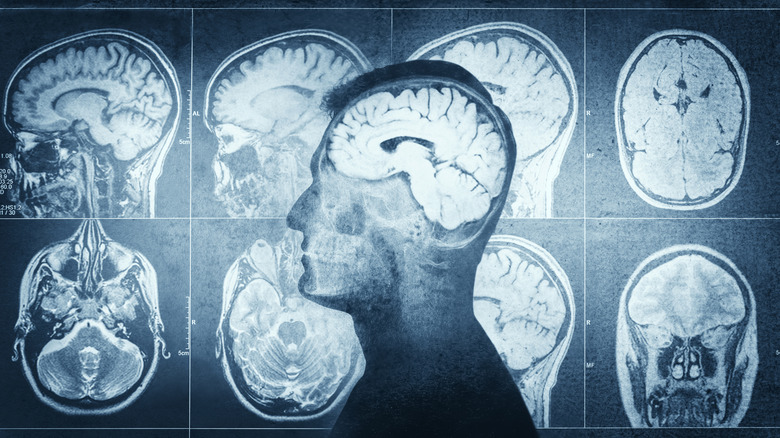What Is CTE?
Chronic traumatic encephalopathy, or CTE, is a serious medical condition that affects the brain after repeated trauma to the head, according to the Boston University (BU) CTE Center. It is a progressive and degenerative disease where an abnormal protein called tau builds up in the brain. This is due to repetitive hits to the head, which is common in athletes and military veterans.
In the 1920s, boxers suffered from CTE, which was known then as punch drunk syndrome or dementia pugilistica (via BU CTE Center). Recently, studies have shown that many different athletes can suffer from CTE, including those who play football and hockey, and while it's common in professional athletes, it can even be present in those who only play sports in high school or college.
When CTE is present, the protein tau malfunctions in the brain, setting off a chain reaction causing other proteins to malfunction (via Concussion Legacy Foundation). This slowly spreads and kills brain cells, often not detected until years after the injuries. Symptoms are vast and may include mood and behavior changes like aggression and paranoia, cognitive changes like short-term memory loss and impaired judgment, and sleep disruptions like REM behavior disorder.
Much is still unknown
Scientists are still learning about CTE, so there is a lot that is still unknown, according to the Mayo Clinic. There is currently no cure or treatment for CTE, so prevention is important. Limit the number of head injuries you're exposed to, especially if you've already suffered from one concussion, as you're more likely to suffer from more head trauma.
However, not everyone who has had repetitive head trauma will go on to develop CTE, leading scientists to believe there may be other risk factors such as the age of first exposure to head trauma, how long a person has been exposed to trauma, and genetics (via Concussion Legacy Foundation). It is not yet clear who is most at risk. The only way to diagnose CTE is after death through an autopsy when a special chemical is used on slices of brain tissue to highlight the excess tau proteins. Therefore, prevention is key.


